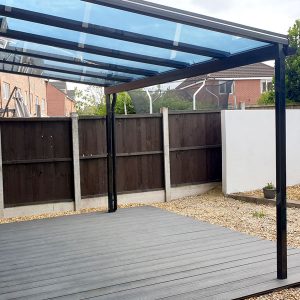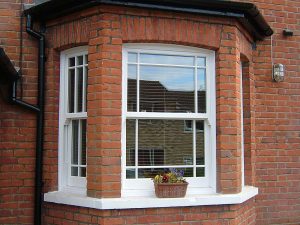A modern orangery brings a unique blend of tradition and contemporary design to home extensions. Originally built in the 17th century to protect exotic plants during cold weather, orangeries have evolved into luxurious spaces for homeowners. Today, they serve as stylish living areas, blurring the lines between indoor and outdoor environments.
In this article, we will explore what a modern orangery is, how it differs from traditional conservatories, its benefits, and key design features.
Defining a Modern Orangery
A modern orangery functions as an extension that combines the structural solidity of a traditional building with the glass-filled openness of a conservatory. Its design typically includes:
– Brick or Stone Bases: Unlike conservatories, which use full-length glass panels, modern orangeries feature partial brick or stone walls. These create a more permanent, insulated structure, making orangeries usable year-round.
– Large Windows and Roof Lanterns: Modern orangeries integrate large windows and skylights or roof lanterns to maximise natural light. These features allow the space to feel bright and open, creating a seamless connection to the outdoors.
– Flat Roof with a Central Glazed Section: Instead of sloping roofs, modern orangeries often have flat roofs with a raised glazed section in the middle. This design gives the orangery a sleek, contemporary look while letting in light from above.
How Does a Modern Orangery Differ from a Conservatory?
While both orangeries and conservatories aim to bring more light and outdoor views into the home, they differ in several ways:
– Materials and Structure: A modern orangery uses more brick or masonry than a conservatory, providing greater insulation and a more solid feel. Conservatories mainly use glass panels and a minimal frame, creating a lighter structure.
– Year-Round Usability: Thanks to the thicker walls and better insulation, orangeries maintain a comfortable temperature year-round, while conservatories can feel too cold in winter and too hot in summer.
– Design Flexibility: Modern orangeries offer more architectural flexibility than conservatories. Homeowners can match the orangery’s brickwork or cladding to the rest of the house, making it feel like a natural extension rather than an add-on.
Benefits of a Modern Orangery
Modern orangeries provide numerous benefits that enhance both the functionality and aesthetic appeal of your home. Here are some of the top advantages:
– Increased Living Space: Adding an orangery extends your living area, creating a versatile space that you can use as a dining room, lounge, kitchen extension, or even a home office. It offers a bright, open area for relaxation or entertaining guests.
– Connection to Nature: With large windows and roof lanterns, orangeries create a strong connection to the outdoors. You can enjoy garden views and natural light while remaining sheltered from the elements.
– Boost to Property Value: A well-designed modern orangery adds value to your home by increasing square footage and enhancing its overall appeal. Potential buyers often see orangeries as a desirable feature, combining luxury with practicality.
– Energy Efficiency: Modern orangeries often use energy-efficient glass and well-insulated materials, keeping the space warm in winter and cool in summer. This can help reduce energy bills and minimise the environmental impact.
Key Design Features of a Modern Orangery
When designing a modern orangery, homeowners have plenty of options to customise the space to fit their style and needs. Some of the most popular design features include:
– Bespoke Glazing: Modern orangeries often incorporate advanced glazing options, such as self-cleaning or tinted glass. This makes maintenance easier and helps control the temperature inside the space.
– Underfloor Heating: To ensure year-round comfort, many homeowners install underfloor heating systems in their orangeries. This not only provides warmth but also keeps the space free from radiators, maintaining the clean, modern look.
– Open-Plan Design: Many modern orangeries follow an open-plan design, merging seamlessly with the rest of the home. You can combine your orangery with a kitchen or dining area, making it a multifunctional space.
– Bi-Fold or Sliding Doors: Incorporating bi-fold or sliding doors into the orangery allows you to open up the space directly into the garden. During warmer months, these doors can transform your orangery into a perfect indoor-outdoor living area.
Popular Uses for a Modern Orangery
A modern orangery offers versatility and can serve different functions within your home. Here are a few common ways homeowners use their orangeries:
– Dining Room: Many homeowners transform their orangeries into elegant dining spaces. The natural light and garden views make meals more enjoyable and create a relaxed atmosphere for family gatherings.
– Lounge or Sitting Area: Some homeowners use orangeries as cozy lounge areas where they can unwind and enjoy the views outside. Comfortable furniture, combined with soft lighting, makes this a perfect retreat.
– Kitchen Extension: Expanding your kitchen into an orangery creates an airy, bright cooking and dining space. The large windows and high ceilings offer plenty of ventilation and light, making it ideal for hosting.
– Home Office: With remote work becoming more common, many homeowners convert their orangeries into stylish home offices. The peaceful, light-filled environment promotes focus and creativity.
Conclusion: Why Consider a Modern Orangery?
A modern orangery adds both style and function to your home, blending traditional elegance with contemporary design. It provides a bright, open space that enhances your connection to nature while offering year-round usability. Whether you need extra living space, a kitchen extension, or a relaxing lounge, a modern orangery offers endless possibilities. With the right design and materials, an orangery can transform your home and increase its value, making it a worthwhile investment for homeowners seeking luxury and functionality.












